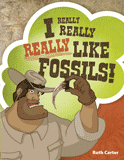Swimming with the Dinosaurs
One way or another, in the creation model, Castorocauda is another example of God’s fascinating design in a pre-Flood organism; in the evolution model, Castorocauda is a surprise and challenge.
Fossils that might be from mammals are rarely found in the same rocks with dinosaurs. And the few that are found tend to be tiny, shrew-like animals. Last week a new fossil species was described (Castorocauda lutrasimilis), based upon a remarkable fossil from dinosaur-bearing Middle Jurassic rocks in China.1 Since the fossil is still pictured in pieces and was found on a professional excavation involving at least one scientist from the Carnegie Museum,2 we can hope it is not an example of the fossil forgeries that have been coming out of China for the last decade or so.
The fossil is in good enough shape to preserve hair. This means that it not only has the complexity of teeth, which is only found in mammals, but it has hair, one of the two distinguishing characteristics of modern mammals (the other being lactation). In fact, it actually has two layers of hair, the lower layer keeping the skin dry. This type of hair is found only in certain modern mammals specialized for an aquatic habitat. Because we still lack evidence of its ability to lactate, we cannot be absolutely sure that it is a mammal in the modern sense of the word, so it is still properly classified in the Mammaliaformes rather than in the Mammalia.
Castorocauda is aquatic and weighs in at about one-and-one-half pounds, making it the largest and most specialized mammal or mammaliaform known from the Jurassic. Castorocauda also shows evidence of divine design. An under-layer of water-proofing hair, vertebrae permitting flexure for tail-driven locomotion, a broad tail and webbed hind feet seem to be (“perfectly”3) designed so that the animal can swim in water. Consistent with that, the teeth are designed for eating fish and aquatic invertebrates. The forelimbs are also specially designed for digging.
Castorocauda occupies an ecological niche that mammaliaforms at the time of the dinosaurs were not thought to occupy.
At the same time, the design features are arranged in a unique chimera-like manner—possibly a widespread feature of God’s design plan. The tail is (“remarkably like”3) the tail of a beaver and the teeth battery (“closely resembles”3) the teeth battery of a seal.
A well-designed mammaliaform found among the dinosaurs is not a great surprise to creationists. Castorocauda is, however, a bit of a challenge to evolution. It is a docodont, an extinct mammaliaform group without any known living descendants. Considered by evolutionists as a side-branch on the evolutionary tree to mammals, any similarities in specialized features (the beaver tail, the seal teeth, the double-layered fur, the webbed feet, etc.) would be examples of convergent evolution—where the same traits evolved independently. Without a Creator with sufficient power and motivation to create such complex traits, it is hard enough to explain the evolution of a trait once, let alone multiple complex organs more than once.
A further problem is the fact that such a specialized mammaliaform is found so low stratigraphically. Similar specializations aren’t seen in fossil mammals until much further up the stratigraphic column. Castorocauda also occupies an ecological niche that mammaliaforms at the time of the dinosaurs were not thought to occupy. Unlike creationists, who expect a wide disparity of mammalian form to exist at the time of the dinosaurs (because God created that diversity in the Creation Week), evolutionists have to evolve that disparity. Castorocauda shortens the time available for that evolution and suggests (in line with the creation model) that mammals and mammal-like animals were much more diverse at the time of the dinosaurs than evolutionary theory has previously thought.
One interesting question in the creation model is where these mammaliaform organisms fit ecologically into the pre-Flood world. Modern groups of placental mammals are not found among the dinosaurs—only mammaliaforms and some marsupials. This suggests that placental mammals may not have lived with dinosaurs [i.e., shared the same habitat] before the Flood—only mammaliaform animals and some marsupials. The destruction of that entire ecosystem might explain why not only the dinosaurs, but also the mammaliaform animals, are not found on the earth today.
One way or another, in the creation model, Castorocauda is another example of God’s fascinating design in a pre-Flood organism; in the evolution model, Castorocauda is a surprise and challenge.
Footnotes
- J., Q, Z-X Luo, C-X Yuan, A.R. Tabrum, 2006, A swimming mammaliaform from the Middle Jurassic and ecomorphological diversification of early mammals, Science 311:1123-7.
- Lagiovane, D., 2006, Scientists discover first swimming mammal from the Jurassic [23 Feb. 2006 press release], Carnegie Museum of Natural History, Pittsburgh, Pennsylvania.
- Martin, T., 2006, Early mammalian evolutionary experiments, Science 311:1109-1110.
Recommended Resources

Answers in Genesis is an apologetics ministry, dedicated to helping Christians defend their faith and proclaim the good news of Jesus Christ.
- Customer Service 800.778.3390
- © 2024 Answers in Genesis







